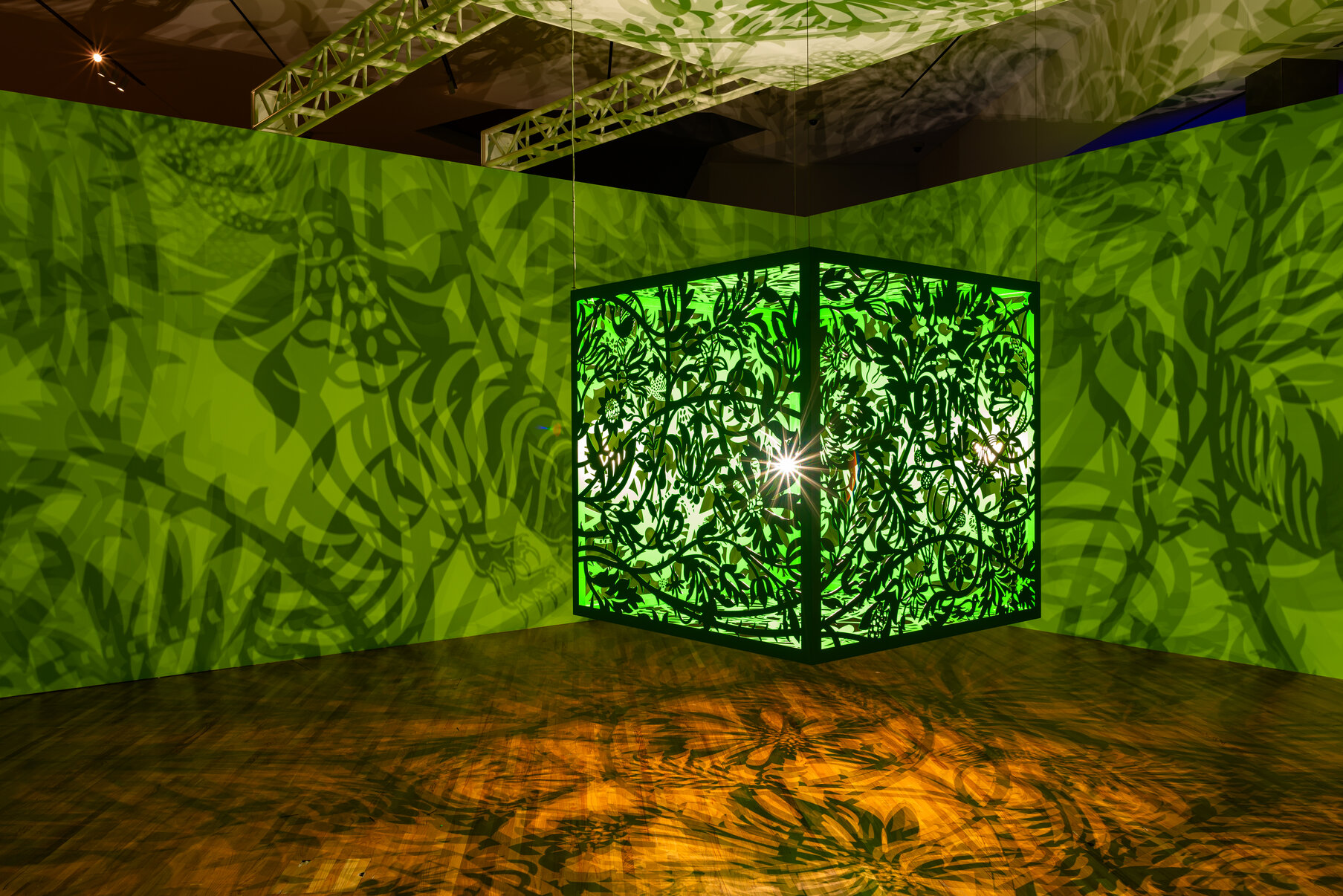by Roy Bernardi and Jennifer Leskiw
Recently, we went to see the exhibition of Rae Johnson’s work at the Christopher Cutts Gallery on Morrow Avenue in downtown Toronto. Several large-scale landscape paintings were shown among smaller more intimate landscapes. Johnson, born in Winnipeg, Manitoba, studied at the New School of Art in Toronto from 1975 to 1976 and continued her education at the Ontario College of Art from 1977 to 1980. As a distinguished female Canadian artist, she lived and created art in Toronto during the 1980s before relocating to Flesherton, Ontario, in 1987. She stated that Robert Markle, one of her educators, was her most significant influence. She passed away in 2020. The opening event was attended by Rae Johnson’s children, Adrian, Joslyn and June.
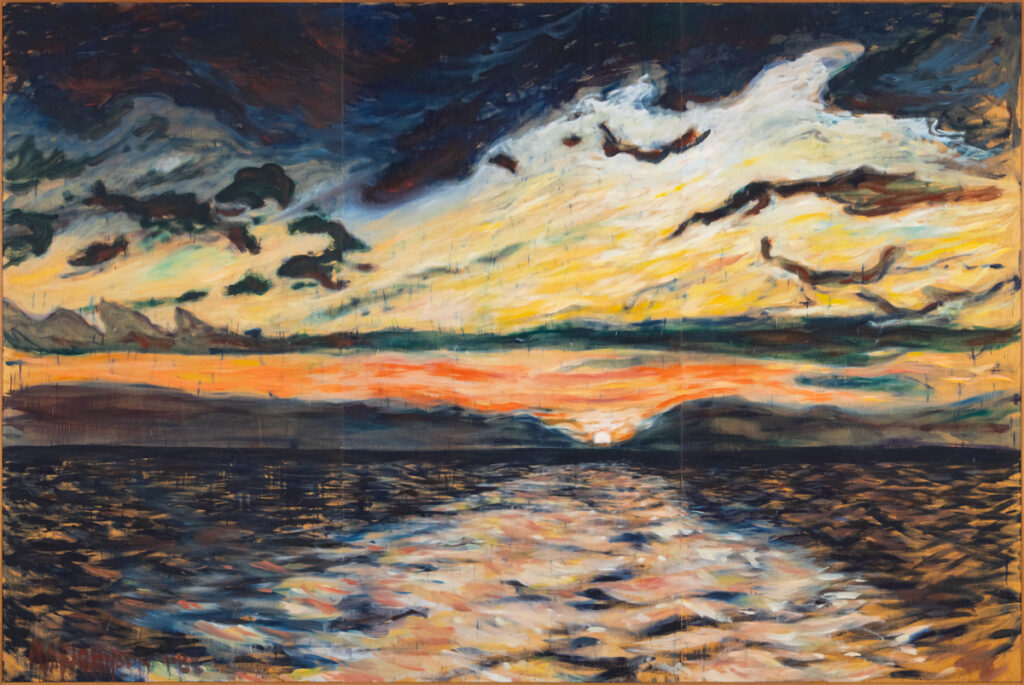
Her artistic expression captures the diverse experiences of life in her immediate surroundings. Her artwork ranges from representations of demons and ethereal beings in the snow, to angelic figures, scenes of indulgence, intimate moments in bathtubs, depictions of societal outcasts, inebriated individuals, saintly figures, and verdant landscapes reminiscent of the Garden of Eden. Her creations explore the intersection of the sacred and the profane. She often portrayed her studio or living space, utilizing friends and her children as subjects.
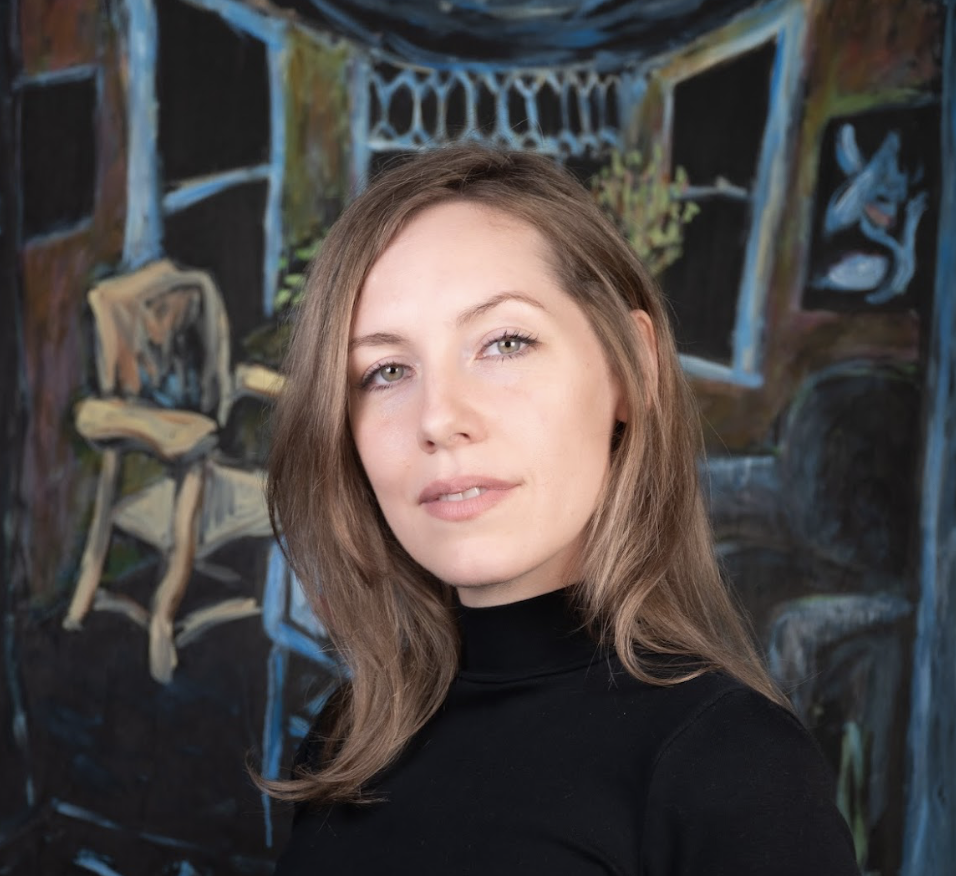
We sat down with her daughter Joslyn Rogers who works in the entertainment industry as an Actor/Writer/Director for a candid interview.
What was life like as the child of an artist?
I was raised in a creative environment. I had the privilege of being the child of two talented individuals. My mother Rae Johnson was a gifted visual artist. My father, Clarke Rogers, was the artistic director from 1982-1987 of Theatre Passe Muraille, a Canadian alternative theatre company that champions independent and experimental performances.
I remember playing in my mother’s various studios. She would be painting into the night, listening to Nirvana or Jimi Hendrix, and I would be finger painting beside her. I remember falling asleep to the clickety-clack of my father’s typewriter, and playing backstage at his rehearsals. When I was a baby we were in-between apartments so we slept on the set of ‘Jessica’, a play by Linda Griffiths and Maria Campbell. My father was directing the play and my mother painted the poster for it.
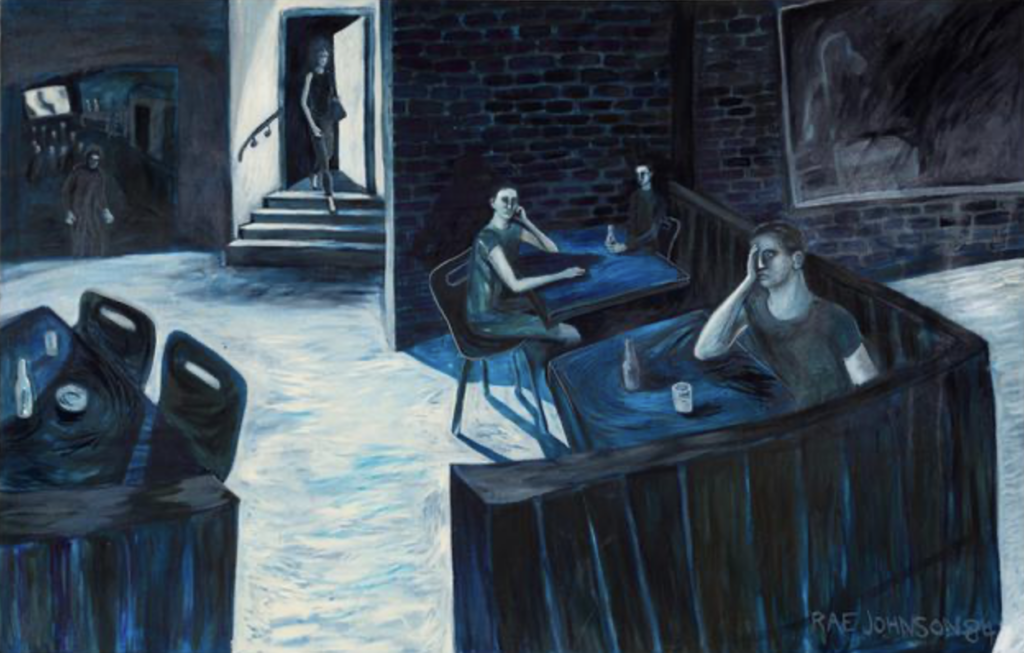
We moved out of Toronto in the late 1980s and bought a country property in Flesherton, Ontario. We had acres of forest around us and a pond which became the muse for mother’s paintings over the next decade. Flesherton was an artist community so most of my friends were children of artists, like the daughters of painter Harold Klunder and sculptor performance artist Catherine Carmichael. Regardless of where we lived, our living rooms always transformed into my mother’s creative workspace. We frequently attended art shows alongside her eclectic circle of friends, including her close companions and fellow artists Tom Dean, Sybil Goldstein and Lorne Wagman.
My sister, brother, and I were often left to our own devices, and would play from morning until night out in the sprawling woods surrounding our house. We became very attuned to nature, to the spirits of the forest, and were given the freedom to explore the imaginary worlds we would create in play.
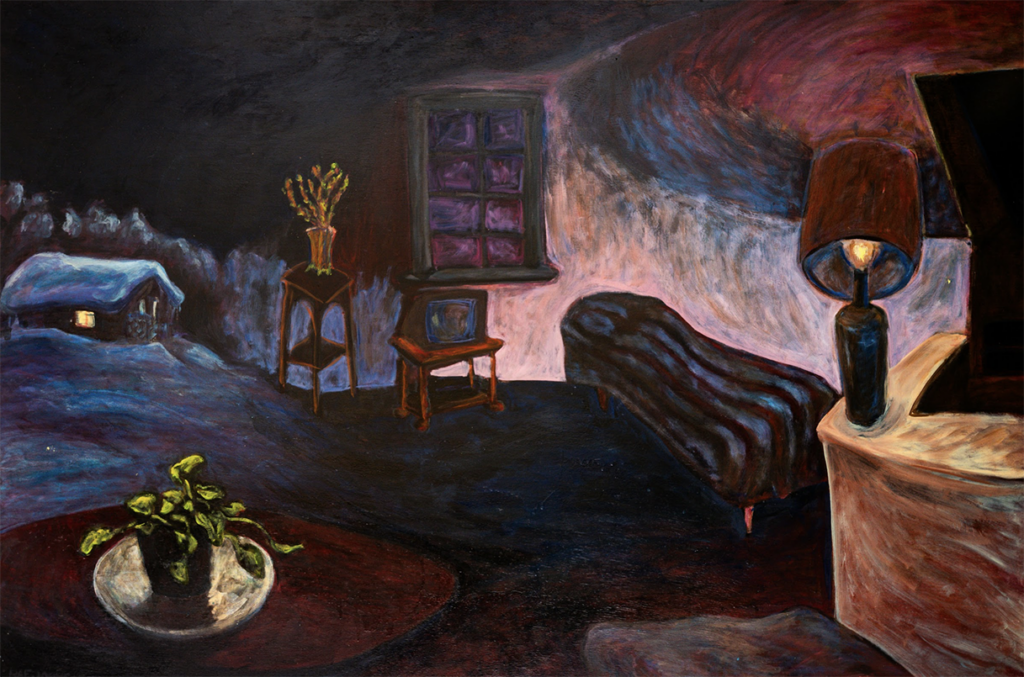
After the death of my father, my family moved back to Toronto. It’s only now as an adult that I can truly appreciate the clan I grew up with and belong to, and that when I declared to my mother as a little girl that I wanted to be an actress, I was met with encouragement and not “get a real job”.
My mother, Rae, was an integral part of the Toronto arts community during the late 1970s and early 1980s. During this time, a collective emerged, ChromaZone, a vibrant creative group dedicated to reintroducing figurative painting to Toronto, featuring notable figures such as Brian Burnett, Oliver Girling, Andy Fabo, Sybil Goldstein and Tony Wilson. My mother was also an associate professor at OCADU. It’s stunning how influential she was.
Tell us what you know about your mother’s relationship with Brian Burnett?
Brian and my mother met at The New School of Art in Toronto as students. They quickly fell in love and had my brother Adrian. My mother told me about being poor students with a babe in arms, living in artist warehouses, and the “art wars” between them – spending nights trying to out-paint one another. Tom Dean remembers visiting Rae and Brian at their illegal apartment on Niagara street, which they had converted mostly into their studio with floor to ceiling paintings and a giant mound of dirty baby diapers in the centre of it all. Brian and Rae were budding artists together. They played in experimental art bands, one called Niagara, and another called DogSound, with other local Queen West visual artists like Micheal Merrill, Alan Glicksman, Lorne Wagman, and Derek Caines. They were ambitious, hot young art stars, and found their artistic voices together. They had the best art dealers in town: Brian was with Av Issacs, and Rae with Carmen Lamanna. I can see how they influenced each other in their respective paintings which share surrealist, dream-like qualities. Sometimes I can even see representations of each other in their work.
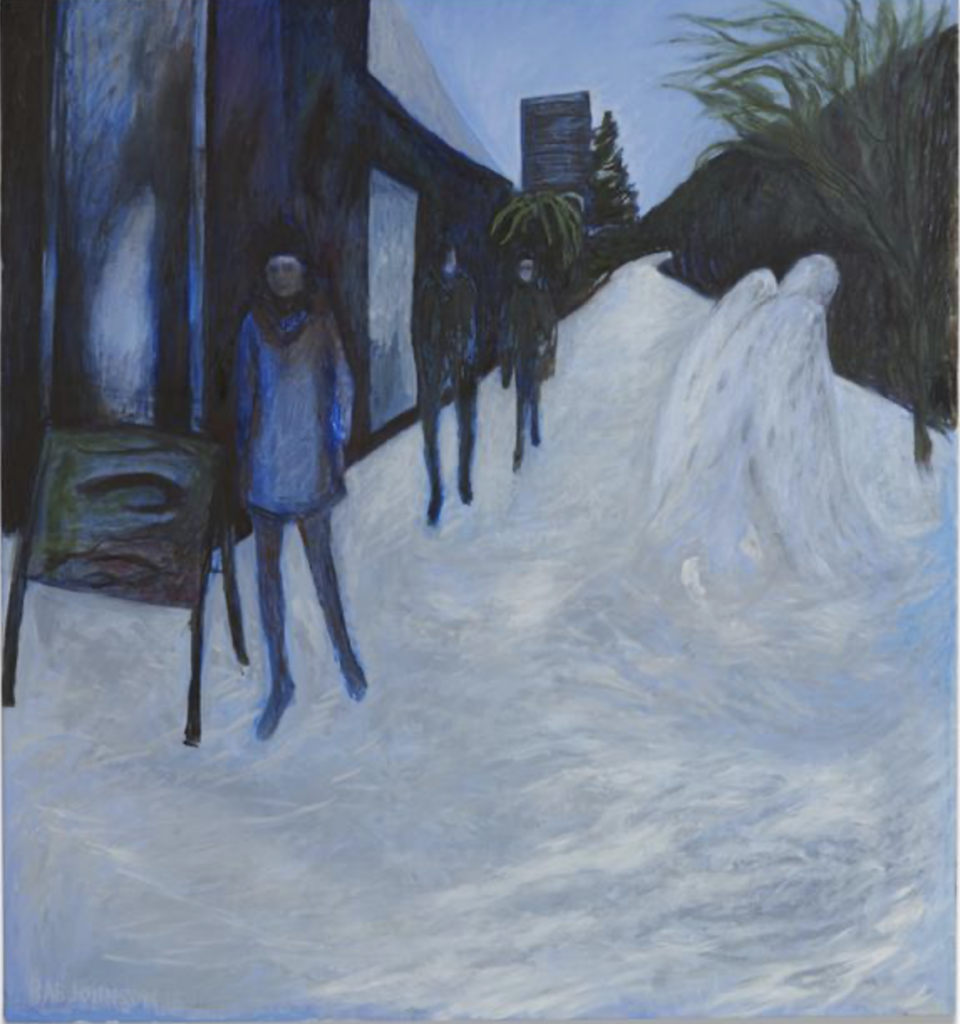
They broke up in the mid 80s after nearly a decade together. It was devastating to my mother, who nearly had a mental breakdown but, that led to some of her most powerful paintings which now belong to permanent collections throughout Canada.
What do you recall about Rae’s art work?
When I think of my mother’s work, I recall my own life. When we were living in Florence, she was working on a series titled “Bambino Miracolo”, which was exhibited at the Canadian Cultural Centre in Rome, Italy. They were large scale oil paintings inspired by the horrific images coming out of the Bosnian war at the time. Embedded in the painted scenes were dying babies attached to intrusive medical devices and renaissance angels guarding over top.
My life has been chronicled through my mother’s paintings. She painted our property in Flesherton, every season, every time of day. She painted portraits of her friends, every studio she inhabited, the storms and sunsets over Lake Winnipeg where our family cottage was, and she painted us, her children. I appear in her paintings at every stage of my life: as a baby, a young girl, and even as an adult. One of the most inspiring qualities about my mother was that she always painted. My father committed suicide by hanging in our Flesherton forest in 1996. From that came a body of work she called “The Black and White Series” and “The Premonition Drawings”. Like the titles suggest, they are black and white, often interiors of her bedroom with ghostly figures lurking in the shadows.
Did Rae favour figurative work over landscape painting?
My mother didn’t start painting landscapes until the late 1980’s after moving to Flesherton. She said she began in secret, afraid the new subject matter would be perceived as an affront to her well established style of “urban nightmares.” To her, this transition to painting nature was her most daring work. She also proclaimed that painting the sunsets over our Flesherton Pond was where she learned how to paint light. My mother’s paintings have a narrative spirit, and she would alternate between figurative and landscape for the rest of her life, each reflecting her inner soul.
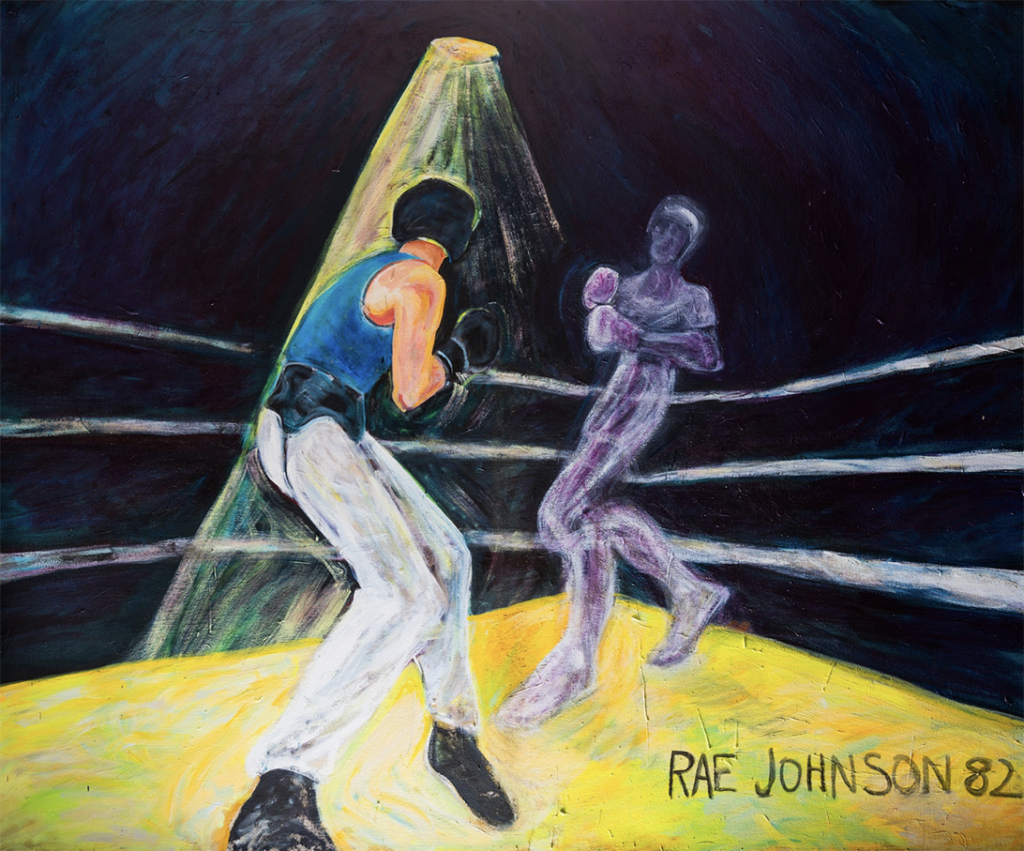
I believe that good artists are visionaries, often unacknowledged or misunderstood in their own time. After taking on her artistic estate, I have been working alongside the new generation of curators and artists. They seem to understand and appreciate my mother’s work and that of her contemporaries. My mother was ahead of her time, waiting to be rediscovered.
